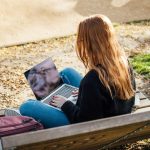As triathletes, being prepared for intense competition in various climates is a crucial part of your training. A key component of this preparation is heat acclimation. With rising global temperatures, understanding how to acclimate your body to heat is more important than ever. In this article, we’ll dive into the latest findings in heat acclimation for triathletes, underpinned by scholarly studies and credible physiol and med research. We will discuss the benefits of this adaptation process, the best practices for heat acclimation training, and how improved heat endurance can enhance overall sports performance.
Understanding the Importance of Heat Acclimation
Heat acclimation is a crucial component of an athlete’s training regimen, particularly for those engaged in endurance sports such as triathlons. It refers to the physiological adaptations that occur in the body when regularly exposed to hot conditions. These changes help the body to better cope with heat stress, ultimately improving endurance and performance during intense exercise or competition in hot climates.
Lire également : How Can Biometric Wearables Enhance Performance Monitoring in Competitive Sailing?
Research published in the Journal of Applied Physiology suggests that heat acclimation can improve the body’s ability to regulate its internal temperature, increase blood plasma volume, enhance sweat rate, and reduce heart rate during exercise in the heat. These adaptations can not only improve an athlete’s comfort and safety in hot conditions but also enhance performance and endurance.
Heat Acclimation Training: Best Practices
When it comes to heat acclimation training, there are a few critical factors to consider. The intensity and duration of the heat exposure, the frequency of training sessions, and the individual’s physiological responses all play a significant role in the effectiveness of the training.
A lire aussi : What Strategies Can Prevent Overtraining Syndrome in Endurance Horse Riders?
A study in the Journal of Sports Sciences recommends that athletes begin heat acclimation training at least two weeks before a competition in a hot climate. This should ideally involve daily exercise sessions in a hot environment, gradually increasing the intensity and duration of the workouts over time. In terms of exercise intensity, moderate to high-intensity workouts are generally more effective in promoting heat adaptations.
Personalizing Heat Acclimation: Factoring in Individual Differences
Heat acclimation does not have a one-size-fits-all approach. Individual differences in physiology, fitness levels, and heat tolerance can significantly influence the acclimation process and its effectiveness.
For instance, according to a study published in the International Journal of Sports Medicine, older athletes can take longer to acclimate to heat than their younger counterparts. Similarly, athletes with a higher body mass index (BMI) may require more prolonged and more intensive heat exposure to attain the same level of acclimation as athletes with a lower BMI.
Heat Acclimation and Performance Enhancement
As we’ve noted, heat acclimation can enhance an athlete’s performance in hot conditions. But interestingly, there’s also evidence to suggest that heat acclimation can improve performance in cooler climates as well.
A study published in Sports Medicine found that after two weeks of heat acclimation training, athletes showed improved endurance performance in both hot and cool conditions. This is believed to be due to the increased blood plasma volume and improved cardiovascular efficiency resulting from heat acclimation.
Safety Considerations in Heat Acclimation Training
While the benefits of heat acclimation are well-documented, it’s also important to note that training in high temperatures comes with its risks. Overheating, dehydration, heat stroke, and other heat-related illnesses are significant concerns, particularly when training at high intensity in hot conditions.
To ensure safe and effective heat acclimation training, athletes should monitor their body temperature closely during workouts and take adequate rest periods. They should also stay well-hydrated, consume electrolyte-rich drinks to replace lost salts, and wear appropriate clothing to aid in heat dissipation.
Remember, heat acclimation is a gradual process. Trying to force the body to adapt too quickly can lead to severe health complications. Therefore, it’s recommended to seek the guidance of a trained professional when embarking on a heat acclimation training program.
The Science Behind Heat Acclimation
Heat acclimation fundamentally involves the human body’s remarkable ability to adapt to increased thermal stress. This process is backed by a wealth of scientific evidence and has been the subject of many scholarly studies. Publications on platforms like Google Scholar and PubMed have shed considerable light on the science behind heat acclimation and its implications for triathlon training.
At the core of this topic is the body’s thermoregulation mechanism, which seeks to maintain a stable internal or core temperature despite fluctuating environmental conditions. When you train in the heat, your body naturally triggers several physiological changes to aid in thermoregulation. These include increased sweat rate, expanded blood plasma volume, decreased heart rate, and improved cardiovascular efficiency.
Research in Med Sci Sports Exercise and Appl Physiol has further illustrated these changes. For instance, sweat rate modifications help cool the body more effectively through evaporation, while increased plasma volume optimizes oxygen delivery to the muscles and aids in heat dissipation. These adaptations not only help the body manage heat stress but also equip it with enhanced endurance and performance capabilities.
As triathletes, understanding these physiological changes and adapting your training strategies accordingly is key to successful heat acclimation. Remember, this is not an overnight process. It requires consistency, patience, and gradual progression in the intensity and duration of heat exposure.
Conclusion: Embracing Heat Acclimation as a Triathlete
Heat acclimation training has become an integral part of preparing for triathlons, and for good reason. The physiological changes your body undergoes in response to heat stress, as highlighted in this article, can significantly enhance your performance and endurance in both hot and cool climates.
Understanding how your body responds to heat and tailoring your training regimen accordingly can help you get the most out of your heat acclimation efforts. However, remember to approach this training method safely. Avoid pushing yourself too hard, too fast. Stay hydrated, take sufficient rest and monitor your body temperature closely to prevent heat-related illnesses.
As we continue to see rising global temperatures and increasingly extreme environmental conditions, heat acclimation training is not just beneficial—it’s essential. By understanding and applying the latest findings in this area, you can stay ahead of the game and ensure you’re ready to perform at your best, no matter the heat conditions.
In conclusion, heat acclimation is not just about getting comfortable in the heat—it’s about maximizing your athletic performance and endurance. So get out there, start your heat training, and take your triathlon performance to the next level! Take this PMC free article as your guide and adapt your training to the heat to see improvements in your overall performance. Despite the challenges that heat acclimation may present, the benefits are worth the effort! Remember, your safety should always be your top priority, so always follow best practices and seek professional guidance in your heat acclimation journey.






